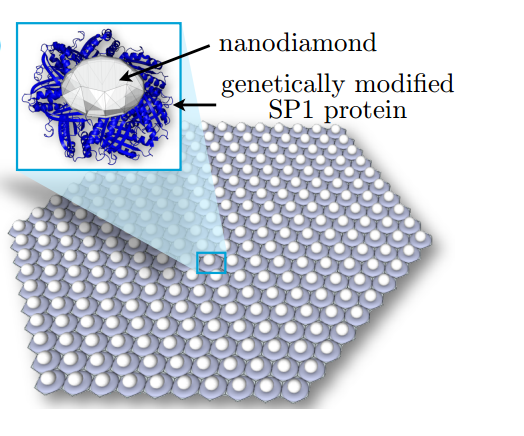First Nanodiamond Arrays Created By Biological Molecules
Nanodiamond arrays are an important technology for quantum computing. Now an international team has used biological self-assembly to build them
One of the most promising ways to capture, generate and manipulate photons is with tiny diamonds. The secret is to create nanodiamonds with a defect in their structure where a nitrogen atom has taken the place of a carbon.
Quantum physicists are particularly interested in these so-called nitrogen vacancies because they can capture, store and emit the quantum information that photons carry. What’s more, they do all this at room temperature. It is even possible to manipulate this information using magnetic and electric fields.
In short, nitrogen vacancies are important building blocks for for quantum computers.
This story is only available to subscribers.
Don’t settle for half the story.
Get paywall-free access to technology news for the here and now.
Subscribe now
Already a subscriber?
Sign in
You’ve read all your free stories.
MIT Technology Review provides an
intelligent and independent filter for the
flood of information about technology.
Subscribe now
Already a subscriber?
Sign in
But there’s a problem. It’s not hard to make individual nanodiamonds but it is extremely difficult to arrange them next to each other so that the quantum information they store can be processed.
For this to happen, the nitrogen vacancies have to be just a few nanometres apart, much further than conventional manufacturing techniques can manage.
That looks set to change. Today, Andreas Albrecht at Ulm University in Germany and a number of buddies say they’ve demonstrated a way to solve this problem.
Their idea is to bind nanodiamonds together with the required nanometre precision using biological molecules such as DNA and protein. What’s more, they say they’ve demonstrated the technique for the first time.
Biologists have been using biological molecules such as DNA to create complex structures for some time. The technique, called DNA origami, is currently being used to make everything from nanoboxes to metamaterials.
In this case, Albrecht and co coated nanodiamonds with a genetically modified protein called SP1. This protein then bonds with the proteins on other nanodiamonds to form them into a hexagonal array.
In this way, “we experimentally realized the creation of small nanodiamond clusters,” say Albrecht and co, pointing out that this was the first step towards larger arrays needed for quantum computing.
We’ll be watching to see how they get on.
Ref: arxiv.org/abs/1301.1871: Self-Assembling Hybrid Diamond-Biological Quantum Devices
